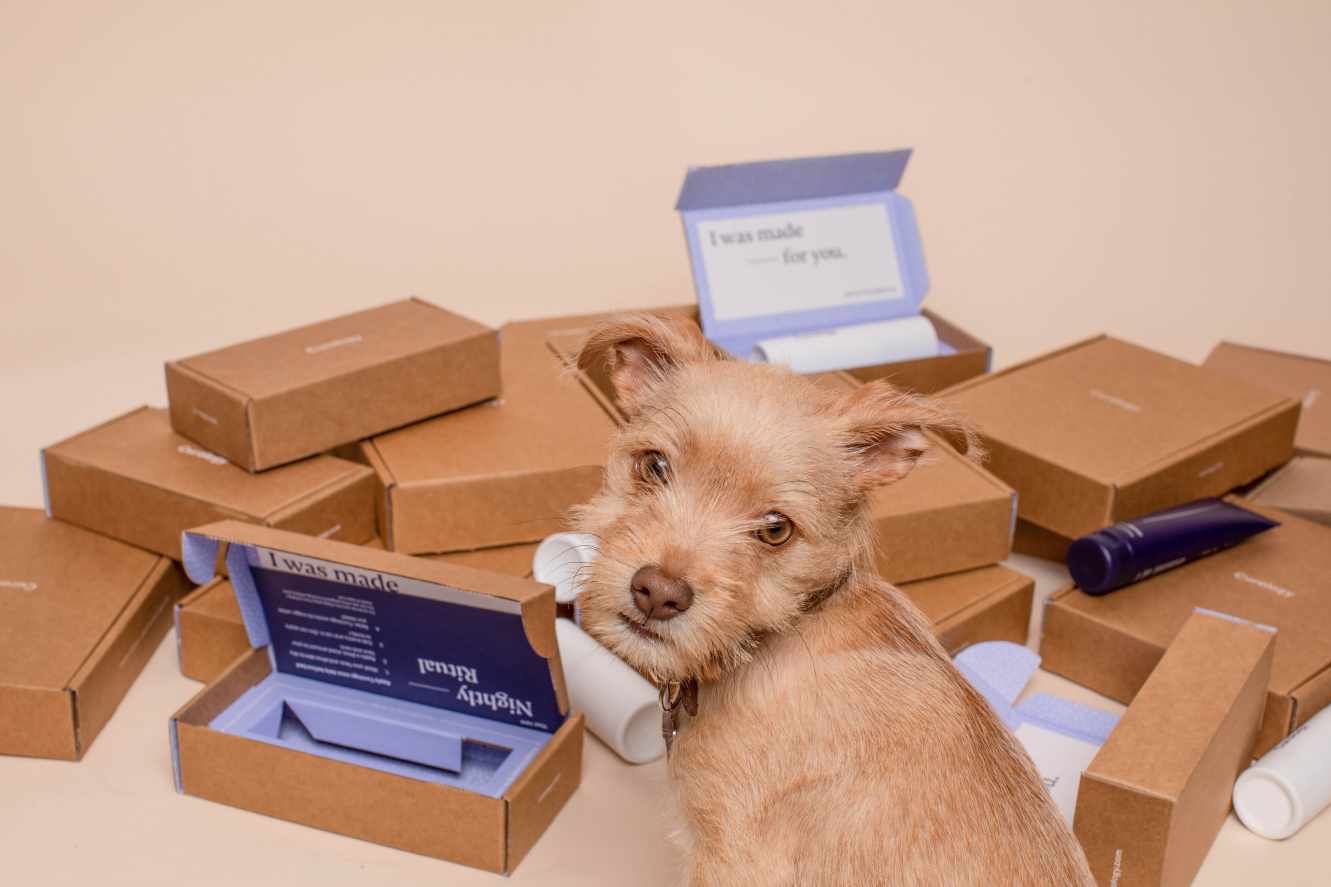Online store sales are very different from your typical retail store. When you sell a product using the physical store, the work ends at the point of sale. With an online store, the work is just beginning.
When you obtain online store sales, you must now fulfill the order. This begins by taking the product and boxing it up for shipment. As an online store, you have lots of competition. Most of the competition will come from large eCommerce companies. Your superpower as a smaller business is your customer service. When you buy a product from a large online store like Amazon and you open the box and see the product, the experience is a bit underwhelming. As a small business, you need to take online store sales to a new level and overwhelm your customer with what is known as the WOW effect.
Unboxing WOW Factor
Instead of simply shipping the product, add something a bit unexpected to the package. It could be as simple as a handwritten thank you note, custom packaging, a free extended warranty, or a coupon for their next purchase. What you want is to create a positive experience that will supercharge your word-of-mouth marketing. When an experience meets our expectations, we rarely take any notice of the transaction. However, little add-ons that exceed customers’ expectations will make their brains pay attention and remember them in a positive way, that they will be more likely to share with others.
One advantage that you do not have when it comes to online store sales is a vast logistics network to reduce the time when the customer orders the product and when they receive it. Therefore, you have to make every effort to process the order and ship the product as soon as possible. Make sure that the shipping method you use includes the ability for the customer to track the location of the order. Be sure to provide an email or SMS message to the customer, saying that their order was shipped and include a link to the product’s tracking data, or customers will be calling you to ask about the status of their order. Amazon’s one or two-day shipping has set the bar high and is something difficult for your online store sales to achieve. To compete, you must respond to orders super-fast and make the opening of the box a WOW experience.
Frictionless Communication
Make sure you have a frictionless way for customers to contact you not only about the status of their order but also for any questions about the product once it arrives. If you have a phone number where customers can contact you, make sure you have someone to answer the phone. Requiring the customer to leave a voicemail sends the message that I have your money and I no longer care about you. If you cannot address incoming phone calls 24/7, consider using a bot that can automate at least some of the communication. Another option to leaving a voice message is to provide an avenue for the customer to communicate with you asynchronously using a messenger app on your website. When you receive a message, respond to the customer as quickly as possible. Your goal is to create a very positive experience so that you drive an organic customer return rate for recurring orders from them. When a customer returns to your site to make additional purchases, you get to spread your customer acquisition costs across multiple sales, leading to more business profits.
Track Cash Flow
Online store sales require that you manage your cash flow very closely. The first step in managing cash flow is tracking your expenses. Create or download a spreadsheet where you track the Cost of Goods Sold (COGS), shipping costs, and your ad spend to determine your gross profit for each product. Here is a free expense spreadsheet you can download that will get you starting to think in the right direction.
While it is important to track your direct and indirect costs when it comes to online store sales, you must understand your cash-out and cash-in timeline. Here is a typical example of an online store.
Day 1 – You pay your supplier for your order. Depending on where and how you sourced your product, it may take from 7 to 30 days to receive your order. Let’s assume that it costs you $5 per unit with a minimum order size of 100 units and it is small and lightweight to ship with express shipping. The total cost of goods is $500 plus shipping costs of $200 for a total of $700.
Note: Actual shipping costs from China are often higher than the cost of the product so keep that in mind.
Day 8 – Assuming that you have received your order from the vendor, you are ready to run your first set of ads to identify your audience. Your cost is $30 in Facebook ads due today, assuming you followed that fast and cheap method to identify your audience. The running total is now $730.
Day 10-12 – You have identified your audience characteristics with a Facebook ad and are ready to start running ads to test your ad copy. You run six ad sets, each at $20 so you are spending $120 per day for three days for a total of $360 in ads. The running total is now $1,090.
Day 11 – One of your ads converts and you make your first sale.
Day 13-20 – Assuming that you have a few ads that are converting, you continue running ads for another seven more days at $20 for each ad set or another $840 for a running total of $1,930 but offset by the margin you have from making sales.
Day 14 – PayPal/Stripe have completed the payment and you see the first payment to your bank account. Even with this best-case scenario, your cash flow had to account for over $1,000 in expenses before you realized any income. Of course, this is only an example, and your expenses may be quite higher and the timeframe to get paid much longer. Therefore, you need to pay particular attention to your cash flow so you don’t run out of money before product sales hit their stride.
Scaling Online Store Sales
Assuming that you have a successful product with lots of online store sales, you will continue to use the margin from your sales to spend more on ads as you scale up. You will want to slowly increase your Facebook ad spend while always being cognizant of your Return on Ad Spend (ROAS).
With a successful Facebook ad campaign, you should now consider diversifying to other advertising platforms. Consider platforms like Pinterest where your ad costs are lower than Facebook.
As your online store sales grow, you don’t want to be held captive by your vendor so you should also consider diversifying your supply chain and find new vendors where you can source the same product.
Since customer service represents one of your superpowers over your larger competition, you may now want to consider hiring a customer support person so you can focus on building your business and your brand. Since most of your sales will be to English speaking customers, be sure to hire a native English-speaking person. While it may be tempting to outsource your customer support to places like India to save costs, remember that customer service is one of your key advantages, therefore this is one area where you do not want to go cheap.
By now, you are seeing some success with your online store sales so it is time to develop a formal business plan. Many so-called business experts tell you to write a business plan before you start an online store. I’m not a believer in writing a business plan before you have validated your business and economic model. Business plans tell you how to execute and scale your business idea. You have to experiment to see what works best, defined by lots of online sales and profit generation before you can write a cogent business plan that will describe your complete business idea and your plan for scaling.
With some success, now is the time to start thinking long-term and build a brand. When it comes to building a brand, consider running brand awareness campaigns for the sole purpose of building your brand recognition, taking advantage of OEM branding by your manufacturer, working with influencers, and sending out press releases.
As you scale, build a team to do the production work while you focus on expanding your business and replicating your success with other products and in other niche spaces. Let the team focus on the “How” while you continue to focus on the “Why”.
Many back-office business functions such as accounting and social media marketing can be easily outsourced to offshore freelancers.
Plan for Problems
Even the best-run online stores will run into problems. You should have a continuity plan that will allow you to continue to operate when you encounter problems. The following is a list of likely problems that you should plan for:
- Facebook blocks your account preventing you from running ads
- PayPal/Stripe will hold funds
- Your relationship with a vendor becomes untenable
- A customer claims privilege or shows microaggression toward your product or brand
- A shipment gets lost
- You get sued
- You experience theft
- You run up against unfair competition where China sells your products directly to consumers for less
- You have a bad employee
External Link to List of Safe Harbor Sales Tax Thresholds By State Update November 29, 2021
Are you prepared to make online store sales?
More posts in the series:
- Becoming an Online Seller – What You Need to Know to Sell Online
- The 11 Most Important Questions to Find the Best Products to Sell Online
- How To Find The Most Profitable Products To Sell Online
- How to Find and Validate Quality Chinese Online Store Vendors
- How to Create a New Online Store Website to Sell Your Products
- How to Find Customers That Will Buy from You Using Facebook Ads
- What You Need to Know About Online Store Sales
Special thanks to Michael Beck for his review of this post. Michael is a SCORE colleague and a maven when it comes to selling online products. Michael is the CEO of BeckTan and Groupe Beck, two businesses that provide consulting services for entrepreneurs with online stores. He is a serial entrepreneur with a wealth of business experience having built more than a dozen successful businesses.












